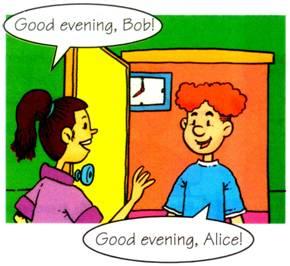
成语故事英语版 朝三暮四
In the Spring and Autumn Period, a man in the state of Song raised monkeys. The monkeys could understand what he said. As the man became poor, he wanted to reduce the monkeys' food. He first suggested that he give them three acorns(橡子) in the morning and four acorns in the evening. Thereupon, the monkeys protested angrily. Then their owner said, "How about four in the morning and three in the evening?" The monkeys were satisfied with that.
This idiom originally meant to befool others with tricks. Later it is used to mean to keep changing one's mind.
战国时代,宋国有一个养猴子的老人,他在家中的院子里养了许多猴子。日子一久,这个老人和猴子竟然能沟通讲话了。
这个老人每天早晚都分别给每只猴子四颗栗子。几年之后,老人的经济越来越不充裕了,而猴子的数目却越来越多,所以他就想把每天的栗子由八颗改为七颗,于是他就和猴子们商量说:“从今天开始,我每天早上给你们三颗粟子,晚上还是照常给你们四颗栗子,不知道你们同不同意?”
猴子们听了,都认为早上怎么少了一个?于是一个个就开始吱吱大叫,而且还到处跳来跳去,好像非常不愿意似的。
老人一看到这个情形,连忙改口说:“那么我早上给你们四颗,晚上再给你们三颗,这样该可以了吧?”
猴子们听了,以为早上的粟子已经由三个变成四个,跟以前一样,就高兴地在地上翻滚起来。
成语故事英语版 守株待兔In the Spring and Autumn Period, a farmer in the State of Song was one day working in the fields when he saw a rabbit bump into a tree stump(树桩) accidentally and break its neck. The farmer took the rabbit home, and cooked himself a delicious meal. That night he thought, 'I needn't work so hard. All I have to do is wait for a rabbit each day by the stump.' So from then on he gave up farming, and simply sat by the stump waiting for rabbits to come and run into it.
This idiom satirizes(讽刺,挖苦) those who just wait for a stroke of luck, rather than making efforts to obtain what they need.
宋国有个农夫正在田里翻土。突然,他看见有一只野兔从旁边的草丛里慌慌张张地窜出来,一头撞在田边的树墩子上,便倒在那儿一动也不动了。农民走过去一看:兔子死了。因为它奔跑的速度太快,把脖子都撞折(shé)了。农民高兴极了,他一点力气没花,就白捡了一只又肥又大的野兔。他心想;要是天天都能捡到野兔,日子就好过了。从此,他再也不肯出力气种地了。每天,他把锄头放在身边,就躺在树墩子跟前,等待着第二只、第三只野兔自己撞到这树墩子上来。世上哪有那么多便宜事啊。农民当然没有再捡到撞死的野兔,而他的田地却荒芜了。
这个成语用来讽刺那些坐等机遇的人,而不是通过努力而获取他们的所需。
成语故事英语版 画蛇添足In the Warring States Period, a man in the state of Chu was offering a sacrifice(祭品) to his ancestors. After the ceremony, the man gave a beaker of wine to his servants. The servants thought that there was not enought wine for all of them, and decided to each draw a picture of snake; the one who finished the picture first would get the wine. One of them drew very rapidly. Seeing that the others were still busy drawing, he added feet to the snake. At this moment, another man finished, snatched the beaker(烧杯,大口杯) and drank the wine, saying,"A snake doesn't have feet. How can you add feet to a snake?"
This idiom refers to ruining a venture by doing unnecessary and surplus things.
楚国有一家人,祭过了祖宗之後,便将一壶祭祀时用的酒,留给办事人员喝。办事人员很多,仅仅一壶酒,到底给谁喝呢?有人提议让每人在地上画一条蛇,谁画得快画得好,就把这壶酒给他。大家都认为这办法很好。有一个人很快就把蛇画好了。这壶酒就归他所得。这时,他回头看别人,都没有画好,就得意扬扬地说:"你们画得好慢呀ⅵ等我再画上几只脚吧ⅵ"正在他画蛇脚的时候,另一个人已经把蛇画好了。那人把酒壶夺了过去说:"蛇是没有脚的,你怎麽画上了脚?"说罢,就喝起酒来。
 爱华网
爱华网



